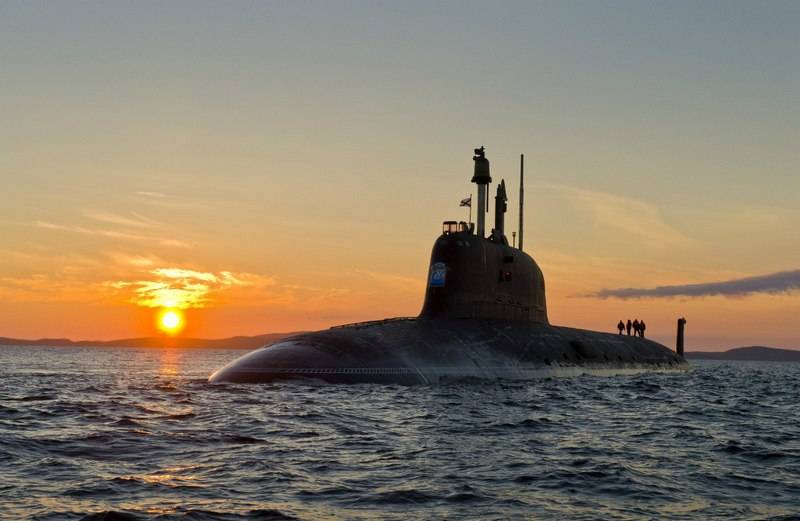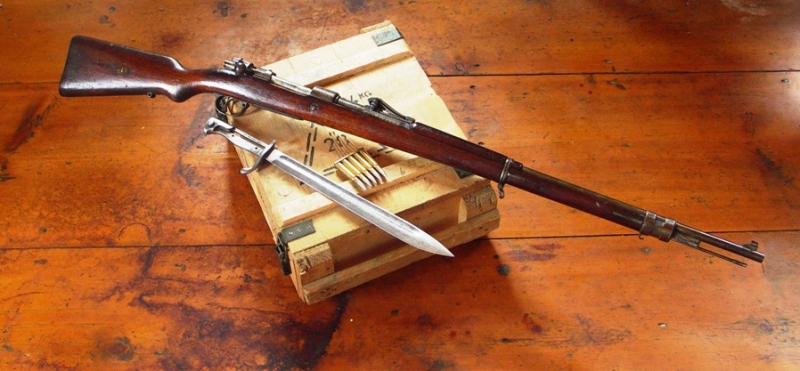
Mauser rifle 98 (Mauser 98) - Store the sample rifle 1898, developed by German designers, brothers Wilhelm and Paul Mauser.
Mauser rifle 98 – video
Mauser rifle 98 It was in service with many armies in the world until the end of the Second World War, and gained a reputation for accurate and reliable weapons.

Mauser rifle Gewehr 98, right view

Mauser rifle Gewehr 98, left view
Mauser 98k (Mauser 98k) - repeating rifle (in German sources: karabiner 98k, Kar98k or K98k), officially accepted into service in 1935 year. It is the main and most abundant small arms Wehrmacht. Structurally is a shortened and slightly altered by modifying Mauser rifle 98.

Karabiner 98k Released in 1942 year, left view

Karabiner 98k Released in 1942 year, right view
Винтовка gun 98 has been zapatentovana Paul Mauser 9 September 1895 of the year. This repeating rifle is a further development of the 7.92-mm rifle sample 1888 city, created on the basis of the experience obtained by the German Army during wars 1864, 1866 and 1870-71. By decision of the Commission Gewehr-Prüfungskommission (G.P.K.) gun 98 (designated as G98 or Gew.98 - sample Rifle 1898 of the year) It was adopted by the German army 5 April 1898 of the year.
The first combat use of rifles Mauser 98 became their use in suppressing the "uprising fighters" in China in the years 1900-1901.
AT 1904 year contracts were signed with Waffenfabrik Mauser on 290 000 винтовок с и German weapons and munitions factories (DWM) on 210 000 rifles.
spring 1915 , it was decided on the selection decision 15 000 Mauser rifles 98, for exceptional accuracy at the time of factory testing, for the installation of the optical sights, and use as a sniper. To install the optical sight performed bolt handle folded down. Used 2,5x and 3x optical sights from manufacturers such as Görtz, Gérard, Young, Zeiss, Hensoldt, Voigtländer, as well as models from various manufacturers of civil Bock, Busch and Füss. By the end of the war 18 421 vintovok Gewehr 98 were converted, equipped with an optical sight and a prominent German snipers. Sniper rifle Gewehr options 98, entered service Reyskhvera, and then the Wehrmacht and were used in World War II.
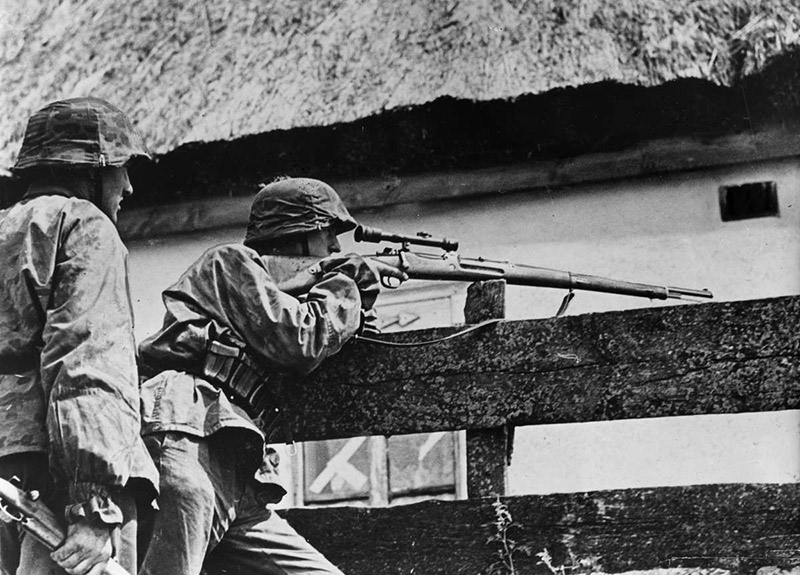
Sniper Waffen SS monitors through the sniper rifle sight on the Eastern Front.
The new rifle was so successful, almost unchanged had served in the German army until the end of the Second World War, as well as in various versions was exported and manufactured under license in various countries (Austria, Poland, Czechoslovakia, Yugoslavia and others.).

carbine Kar.98a
Along with the rifle Gew.98 was released, and a carbine Kar.98, but it comes in its original form only to 1904 or 1905 of the year, when Gew.98 system has undergone the first change due to adopting a new cartridge 7,92 × 57 mm, who had a pointed bullet instead of blunt. The new bullet was much better ballistics and rifles as a result got a new sights, peregraduirovannye under a long-range cartridge. AT 1908 year there was another version of the rifle on the basis Gew.98, since the beginning of 1920 received the designation Kar.98a (K98a). Furthermore Gew.98 reduced relative to the length of the barrel and lodges, K98a had folded down the shutter lever and the hook for the setting of the box under the muzzle of the barrel. next, most mass modification became Karabiner 98 Kurz - Karabyn, released 1935 year and put into service as the basic individual infantry weapons of the Wehrmacht. Carbine differed little improvement, gun belt fixing scheme, sighting devices (male in namušnike).
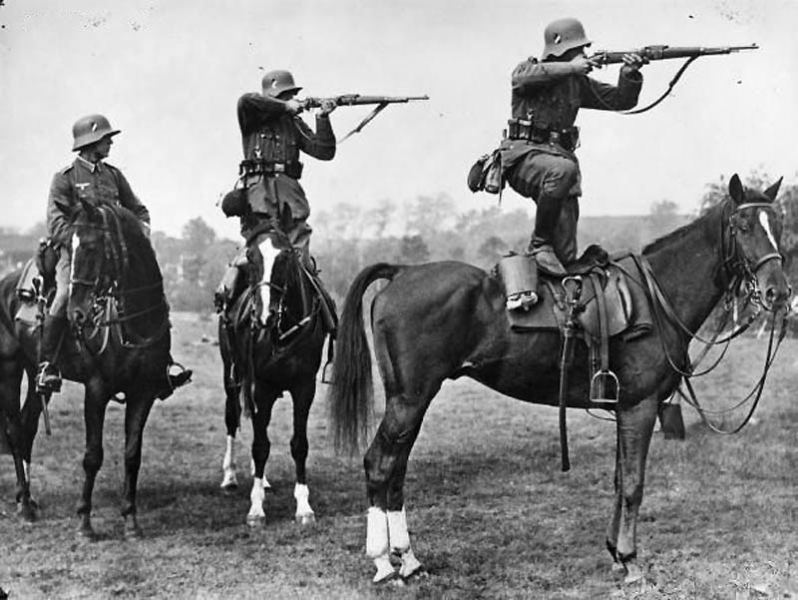
German cavalry in the classroom before the Second World War.
The original designation of "shotgun" for a given sample is not correct from the point of view of Russian terminology: Mauser 98k more properly termed a "shortened" or "lightweight" rifle, as the German term "shotgun" (Karabiner) to use it in those days value is not consistent with the understanding of the word, adopted in the Russian language. By its dimensions this "shotgun" only very slightly inferior, eg, Soviet "trohlineyke". The thing is, that is a word in the German language at that time meant only the presence of a more user-friendly side, "Cavalry" belt clip - instead of "infantry" antabok, arranged on the bed bottom. for example, some German "hooks" were much longer than the guns of the same model. This terminological difference gives rise to a certain confusion, compounded by the, that later in the German language the term "shotgun" acquired its "normal" value, and also began to denote much shortened rifle.
During the war, in order to rationalize production and reduce the relatively high cost of the carbine 98k, has become the main model of small arms Wehrmacht, in its structure the following changes were made:
– for the manufacture of steel boxes used in place of beech plywood walnut (which resulted in an increase in the weight of the rifle 0,3 kg);
– some steel parts made from sheet steel by stamping;
– spot welding the individual parts was introduced;
– used a simplified sight and bolt;
– instead bluing outer surface of the parts subjected to phosphatizing;
– pads handles bladed bayonet began to produce than wood, and bakelite.
For the Wehrmacht and the Waffen SS Mauser 98k was issued following companies:
– Mauser Werke A.G., plant in Oberndorf am Neckar;
– Mauser Werke A.G., plant Borzigvalde, a suburb of Berlin;
– J.P. Sauer and son Gewehrfabrik, factory in Suhl;
– Erfurt Maschinenfabrik (ERMA), plant in Erfurt;
– Berlin-Lübecker Maschinenfabrik, Plant in the city of Lübeck;
– Berlin-Suhler weapons and Fahrzuegerke;
– Gustloff works, Plant in the city of Weimar;
– Steyr-Daimler-Puch A.G., plant in Steyr (Austria);
– Steyr-Daimler-Puch A.G., Shop at Mauthausen concentration camp (Austria);
– Waffenwerke Brunn A.G., plant in Považská Bystrica (Slovakia).
Vplot to 1945 , the German industry, as well as industry occupied countries Germany (Austria, Poland, Czech Republic) produced more than 14 million rifles and carbines of the system.
Variants and modifications
sniper variant - as a sniper rifle used standard, the party selected items, giving maximum accuracy. Used for firing cartridges SmE (Spitzgeschoss mit Eisenkern - pointed bullet with steel core).

Sniper variant Karabiner 98k, right view

Sniper variant Karabiner 98k, left view
The first type of telescopic sight, officially accepted into service of the German army, ZF was 39 (it. Zielfemrohr 1939). Otherwise, this sight called Zielvier ("Chetyrohkratnik"), is the name applied to other rifle scopes, providing a fourfold increase. AT 1940 , the sight was the standard grading at a distance 1200 m. He was placed on the gate, during the war have repeatedly improved support structure.

Mauser Kar.98k with an eye ZF 41
In July 1941 has been adopted by another sight - ZF 41 (it. Scope 41), also known as ZF 40 and ZF 41/1. rifles Kar.98k, equipped with ZF 41, We began to enter the army at the end of 1941 of the year. With a length 13 See it provided only increase polutorakratnoe, mounted on the left side of the rear sight, so it does not disturb charge store of the cage. Due polutorakratnogo increase this scope could be used only for shooting at medium distances. Rifle with sight positioned as a rifle for firing of high accuracy, and not as a sniper. At the beginning 1944 year from the many sights of rifles ZF 41 filmed, but their production continued until the end of the war.
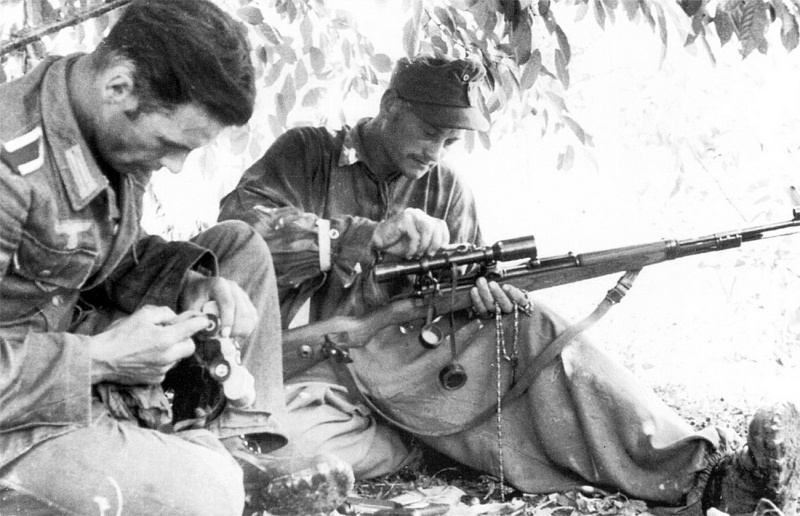
German snipers clean weapons and equipment in between battles.
Telescopic sight ZF 4 (or ZF 43, ZFK 43 and DPC 43/1) designed for self-loading rifles G43, and was a copy of the Soviet sight. Establish G43 release in sufficient quantities could not be, new sights had to adapt to the old rifle. The sight was placed over the gate of the arrowhead-shaped bracket, adopted a few months before the end of the war and the limited edition.
There are other types of sights. for example, Opticotechna sight. Four-telescopic sights and Dialytan Hensoldt & Soehne. Rare six-telescopic sight Carl Zeiss Jena Zielsechs.
A very rough estimate, a telescopic sight was fitted around 200 000 rifles Kar.98k. Approximately half of this amount falls on sight ZF 41, and the other half on the other types of sights.
Special versions for paratroopers - German paratroopers received quite a large number of small arms samples, taking into account the requirements developed by the command of the requirements of the VDV.
Разборный carbine 98k paratroopers, c trunk mounted in the receiver on Slight thread (it. removable drive).

Carbine 98k paratroopers, right view

Carbine 98k paratroopers, left view
shortening Kar 98/42, created on the basis of infantry 98k and differs from it only slightly smaller in length and weight.
Folding - with folding wooden butt 33/40 folding stock. arms length without bayonet was 995 mm, Barrel length - 490 mm. Weight without bayonet - 3,35 kg.

folding carbine 33/40, right view
folding assembly located immediately behind the valve end and the trigger guard. Muzzle velocity - 820 m / s, sighting range reached 1000 m. Rifle supplied with German standard bayonet cultrate. The parachute frequently encountered and sniper rifles folding options 33/40, equipped with an optical sight (denotes the index of ZF).
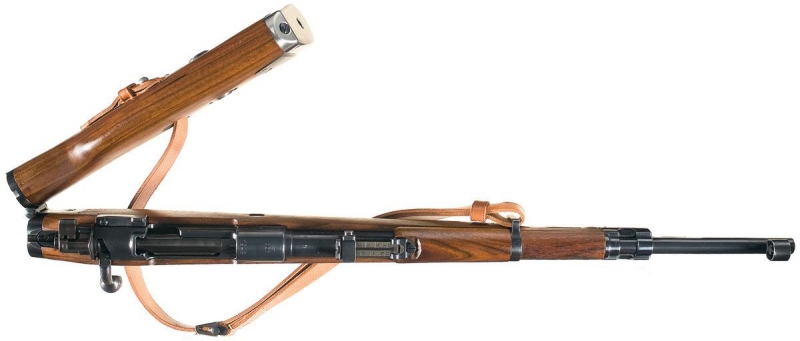
Carbine 33/40 in complex video
rifle Vz. 24 (arguing. rifle vz. 24, sample rifle 1924 of the year) - Czechoslovak magazine rifle with a sliding gate.

rifle Vz. 24, right view

rifle Vz. 24, left view
Made in Czechoslovakia 1924 year on 1942 year. Structurally is a modification of the German magazine rifle Mauser 98. There was a rifle design, She was shorter and more convenient, чем Mauser 98. Performed in Povazska Bistro
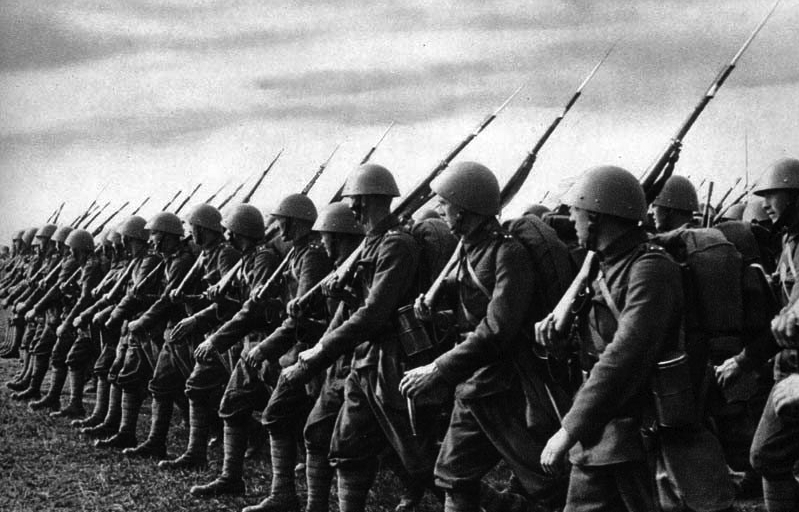
Soldiers of the Czechoslovak armed forces Vz. 24
carbine Vz. 33 - carbine rifle created based on Vz. 24, was intended for police, protection of Treasury and other similar services, differed shortened to 490 mm barrel, total length 995 mm and folded shutter handle, and a new bayonet with a shorter handle. In the production of a 1934 of the year.

carbine Vz. 33 and a bayonet for him, right view

carbine Vz. 33, left view
After the occupation of Czechoslovakia, the carbine was modified slightly and its production has been extended to 1942 of the year, even for the needs of the Wehrmacht, where it was adopted for mountain rifle parts and Snortling called Gewehr 33/40(t).
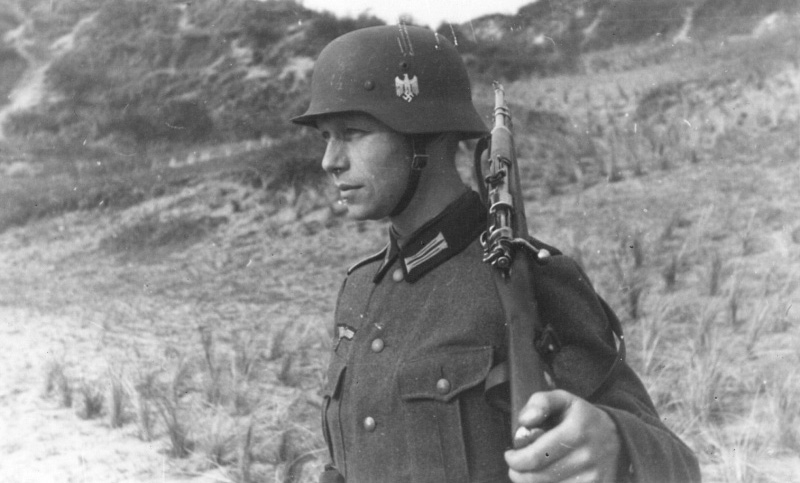
Wehrmacht soldier on guard duty on the coast of the North Sea in the Netherlands. Soldier voorujen Mauser Mauser Gewehr 33/40
rifle wz. 98a (Polish. in with rifle. 98a) - Polish Mauser. He performed in Poland 1936 year on 1939 year. Trophy rifle Polish army arrived on arms of the Wehrmacht under the designation Gewehr 299 (p).
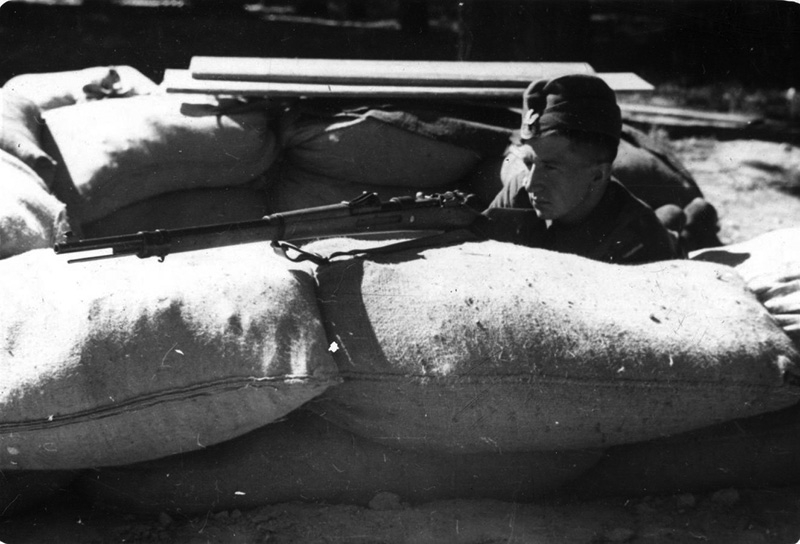
Polish soldiers in the firing position in the suburbs of Warsaw
carbine wz. 29 (Polish. in with carabiner. 29) - a shortened version of the Polish rifle wz. 98a. Produced in Poland 1930 year on 1939 year. Trophy carbines Polish army arrived on arms of the Wehrmacht under the designation Gewehr 298(p).
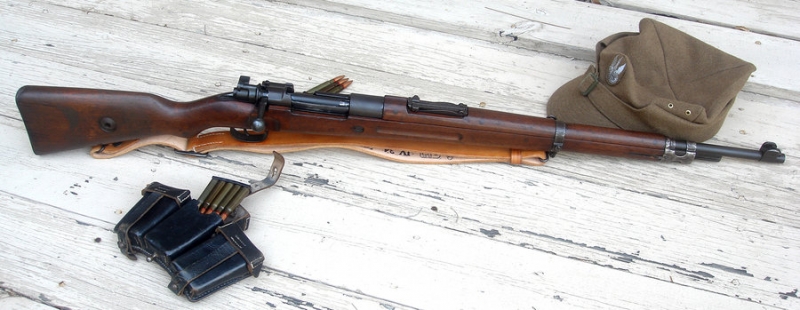
Polish carbine wz. 29
rifle M24 (Serbo-choir. Sokol rifle M. 1924) - Yugoslav version of the rifle Mauser, like the Czech Vz. 24. Made in Yugoslavia 1925 year on 1945 year.
rifle M1935 (fr. Mle gun. 1935) - System Mauser rifle taken into service by the Belgian army, It is the development of a sample of Belgian rifles 1924 year produced FN Herstal for sale on the esport. The main difference - the front fly of his own design and a modified needle mount bayonet.
Rifle type Zhongzheng (whale. Officially), known as Chiang Kai-shek rifle or type 24 (whale. Twenty-four formula) - Chinese Rifle, licensed copy of the German Mauser rifle 98, another predecessor of the Wehrmacht rifle Mauser 98k. Rifle Manufacturing Chiang began in August 1935 of the year (or in 24 the calendar year of the Chinese Republic, after which she was named Type 24). Later it was named type Zhongzheng. The Chinese Red Army was known as Type 79. Despite, that type 24 It was adopted in 1935 year, he was not the most common rifle in the history of the Republic of China, and it began to actively use only during the Sino-Japanese War. Weapon was used until the end of the Korean War.

rifle Type 24, right view

rifle Type 24, left view
Chiang Kai-shek rifle is a replica of Mauser 98: longitudinally sliding shutter of cylindrical shape, long bed and pulled out her muzzle of the barrel, bayonet shank, Finger recesses in the front and one lozhevyh ring are the main visible parts. A type 24 It was better than the Japanese rifle "Arisaka" in such terms, as the rate and range of fire, as well as more compact.
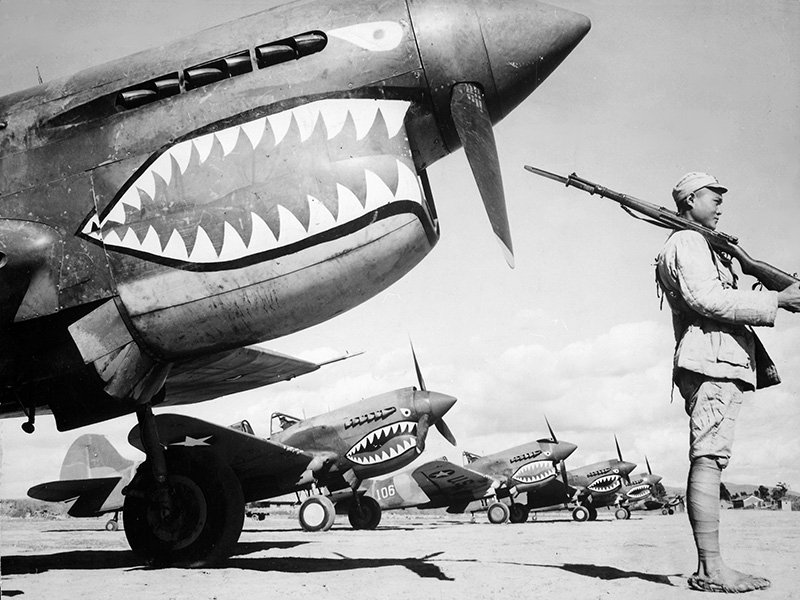
Soldier of the National Revolutionary Army of the Republic of China with a rifle type 24, It protects the fighters P-40 of the American volunteer squadron "Flying Tigers"
Volkssturm carabiner 98 (VK.98) - in the literal translation from German - "carbine Volkssturm". Is a highly simplified version of the Mauser 98k. Mauser company produced at the end of the Second World War, both singly charged, and store in embodiment.

Volkssturm carabiner 98, right view

Volkssturm carabiner 98, left view
At the end of World War II, the other German manufacturers to produce carbines Volkssturmgewehr 1 (VG 1) и volkssturmgewehr 2 (VG 2), that, despite the similarity of names, have significant differences from Volkssturmkarabiner 98.
Design
By design, a rifle refers to the repeating rifle with the sliding gate with a turn when locking. The gate is locked by turning on 90 degrees and has three lugs, two of which are located in a front portion thereof and one - in the rear. The charging handle is located on the rear of the bolt. At the gate, there are vent holes, that during the breakthrough gas is withdrawn from the cartridge powder gases back through the hole for the firing pin down, Store in a cavity. The shutter is removed from the weapon without the aid of tools - it is held in the receiver lock gate, located on the receiver on the left. For extraction gate necessary to put the fuse into the middle position, pull the front of the lock and remove the bolt back. Mauser shutter design feature - a massive nonrotating ejector, exciting the rim of the cartridge during its extraction from the magazine and rigidly holding the cartridge on the mirror shutter. such a system, together with the short longitudinal displacement of the shutter back during rotation of the handle when opening, It provides an initial breakaway sleeves and reliable extraction even very tightly entrenched in the chamber liner. The ejection sleeve of the receiver carried ejector, attached to the left side of the receiver, and passing through a longitudinal slot in the bolt. The barrel is locked symmetrically arranged lugs valve stem. Stock is made of double-row magazine staggered 5 rounds. The store is completely hidden in a box. The loading of the clips on one cartridge or. Loading cartridges directly into the chamber is not allowed, as it can cause damage to the ejector tooth.

Complete disassembly of the rifle
The trigger mechanism striker type, turn trigger a warning. Cocking the hammer and arming are made by turning the handle when opening the gate. Action spring arranged inside the gate, around the hammer. Position the striker can be easily determined either visually or by touch in position projecting from the back gate of the shank. fuse three position, perekydnoy, It located in the rear of the bolt. It has the following positions: horizontally to the left - "the fuse is enabled, the gate is locked ", vertically upwards - "fuse included, free gate "and horizontally to the right -" fire ". The fuse "up" is used for loading and unloading arms, statements prison. Fuse for control simple and easily accomplished with the right thumb.
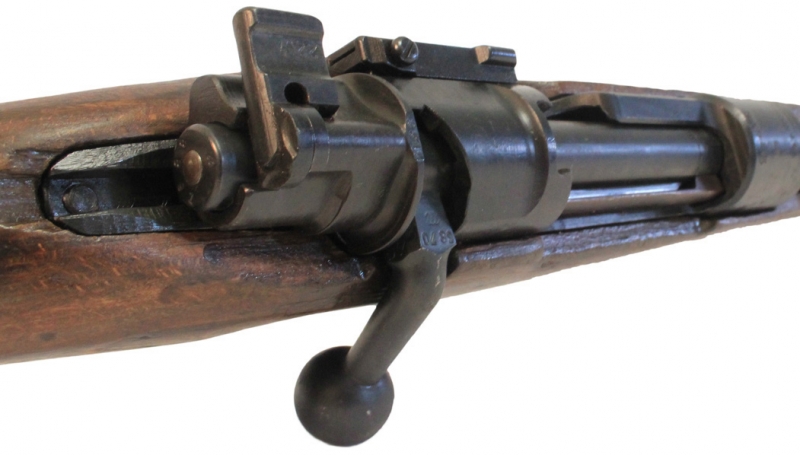
fuse included, shutter is locked
The rifle has a sector sight, consisting of a sighting pads, Spot straps and clamp with latch. On dividing rib applied by 1 to 20. Each division of the range corresponds to a change in 100 m. The front sight is mounted on the basis of the muzzle of the barrel in the groove of the "dovetail" with the possibility of making lateral adjustments. Adjustable rear sight is located on the trunk in front of the receiver. On some samples, fly closed semicircular removable namushnike.
Bed - wood with semi-pistol grip. Backplate - steel has a door, which closes the cavity for storage of accessories, squeegee located in front of the box under the barrel. Gun Cleaning, Standard ramrod collected from the two halves.
Design Mauser 98k, generally, similar constructions Mauser 98. The main features include the Mauser 98k:
– shorter barrel (600 mm instead 740 mm for Mauser 98);
– bent down bolt handle; slightly reduced the box length and having therein a recess bolt handle;
– a metal disc in the through hole of the butt (cringle), used as a stop when the shutter disassembling;
– "Cavalry" belt fastening (instead of "infantry" antabok at Mauser 98) - the front sling swivel is integrated in one piece with a rear ring lozhevyh, and instead of the rear sling swivel - through the slot in the butt;
– Mauser rifles at 98 clip after the store ammunition supplies need to be removed manually, y Mauser 98k ferrule ejected when the shutter movement;
– Change Device feeder - for expenditure of ammunition from the store, he does not give an opportunity to close the gate, that is a kind of signal arrow on the need to store content.
How rifle, carbines and bayonets were completed bladed type, is attached to the tip of the bed. Only to the family of rifles in Germany took 7 basic models, a blade length of 523 mm 345 mm. Mauser 98k manned standard bayonet SG 84/98, significantly shorter and light, than bayonets provided for Mauser 98. Such bayonet blade had a length of 25 cm when the total length 38,5 cm. To wear on your belt bayonet scabbard invested in special. Massed bayonet fighting was not typical for the World, so in order to save at the end of 1944 g. rifle equipped with longer bayonets, they even absent attachment for the bayonet and a ramrod. In addition to the standard bayonet on weapons was adopted model SG 42, although in the series it was not included. SG 42 I had a length 30 cm when the length of the blade 17,6 cm.

bayonet SG 84/98 c foot
Extras
During the Second World War for the rifle Mauser 98k were adopted by the rifle grenade and curved nozzle (smoothbore), making it possible to fire from behind cover (from the angle and r. P.).
Standard rifle grenade Gewehrgranat Geraet 42 He was attached to the barrel by means of a folding clamp. Maximum range up to 250 m. For the grenade had about 7 varieties of garnet.
Antitank grenade launcher barrel GG / P40 (Gewehrgranatgeraet anti-tank 40) specially designed for parachutists. It was lighter and smaller than standard GG 42, He produced a small batch, was attached to the rifle as a bayonet, designed to combat enemy armored vehicles.
Krummlauf - a device for firing from behind cover, capable of turning the course of the bullet on 30 degrees. It is attached to the barrel of the rifle by the same mechanism, and that the barrel grenade launcher. Created by 1943 city, after producing several prototype, the main focus of the work on the curvature of the trunk was moved to assault rifles.
Winter trigger (it. Winterabzug) - a device for firing a rifle in the winter. Created by 1942 year, officially accepted into service in 1944 year. Winter descent consisted of oval tin container with a lever and situated inside the outer side of the trigger. The container is put on the trigger guard. Rotate the outer trigger ago, arrows to descend. Such a device is applied on the sub-machine gun MP 40. unknown, how many of these devices were manufactured, but it is widely used by snipers, since it is allowed to shoot in the winter, without removing gloves.

Sniper Karabiner 98k with an eye ZF4 and winter trigger
Mufflers. There are two muffler for Kar.98k: one length 25,5 cm with the spiral surface, the other - the length 23 cm. They are worn on the barrel with a clamp, like the fixing barrel grenade launcher. Used subsonic ammo. More detailed information is not available.
Advantages and disadvantages
dignity
– High muzzle energy - 3828 J. (carabiner - 3698 J.), good breakdown and lethal effect of bullets.;
– construction prison, It provides high reliability and smoothness of operation, great strength and service life, easy and safe handling;
– Stop gate in the rear position prevents the arrow on the need to charge the weapon and attempts to exclude fire from uncharged weapon;
– Placing the handle end of the shutter allows reloading the rifle without taking it from the shoulder, without losing sight of the goal, and without breaking the monotony of the sighting, which increases the accuracy of fire;
– Hidden in a box store protected from mechanical damage;
– Mauser form 1898 year and its development - Karabiner 98 Kurz became the most successful in its class, as evidenced by a large number of different samples of military and hunting rifles and carbines, the basis of which the device design Mauser.
disadvantages
– Shallow magazine capacity.
– Rifle, despite the large mass, It has a strong impact, sharp and loud sound of a shot;
– Some other rifle with a rotating bolt, for example British Lee-Enfield, have a higher rate of;
– The main disadvantage of this system is the impossibility of fast and cheap mass production.
Using
Besides Wehrmacht Mauser rifle in World War II was in service with the Belgian army, Spain, Poland, Turkey, Czechoslovakia, Sweden and Yugoslavia.
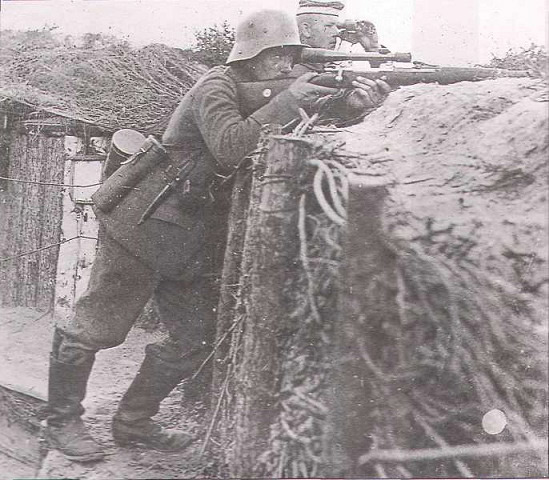
The performance characteristics of the Mauser rifle 98
– Adopted: 1898
– Constructor: Wilhelm and Paul Mauser
– designed: 1898 year (Mauser 98); 1935 year (Karabiner 98 short)
– Manufacturer: Mauser, Sauer and son и другие
– years of production: 1898—1945
– Total production: more 15 million
All Mauser rifle 98
– 4.1 kg
Dimensions Mauser rifle 98
– Length, mm: 1250
– barrel length, mm: 740
Patron Mauser rifle 98
– 7,92× 57 mm
Caliber Mauser rifle 98
– 7,92 mm
Skorostrelʹnostʹ Mauser rifle 98
– 15 rounds / min (military)
Mauser rifle bullet speed 98
– 880 m / s
Sighting range Mauser 98
– 2000
type boepitaniya: integrally cast two-row shop on 5 rounds
Work principles: rolling shutter, ULM striker type
photo Mauser 98
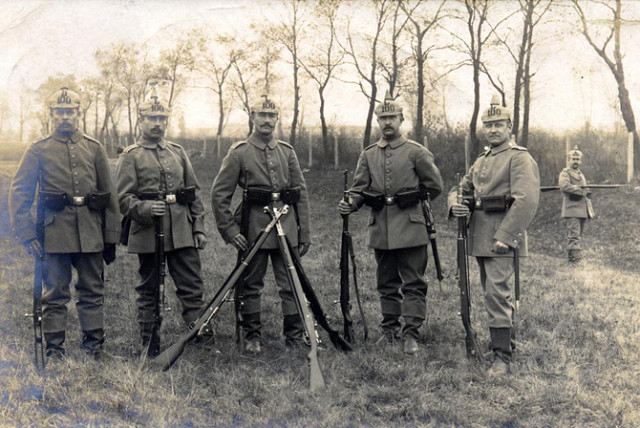
Mauser rifle Gewehr 98, Landwehr, World War I









